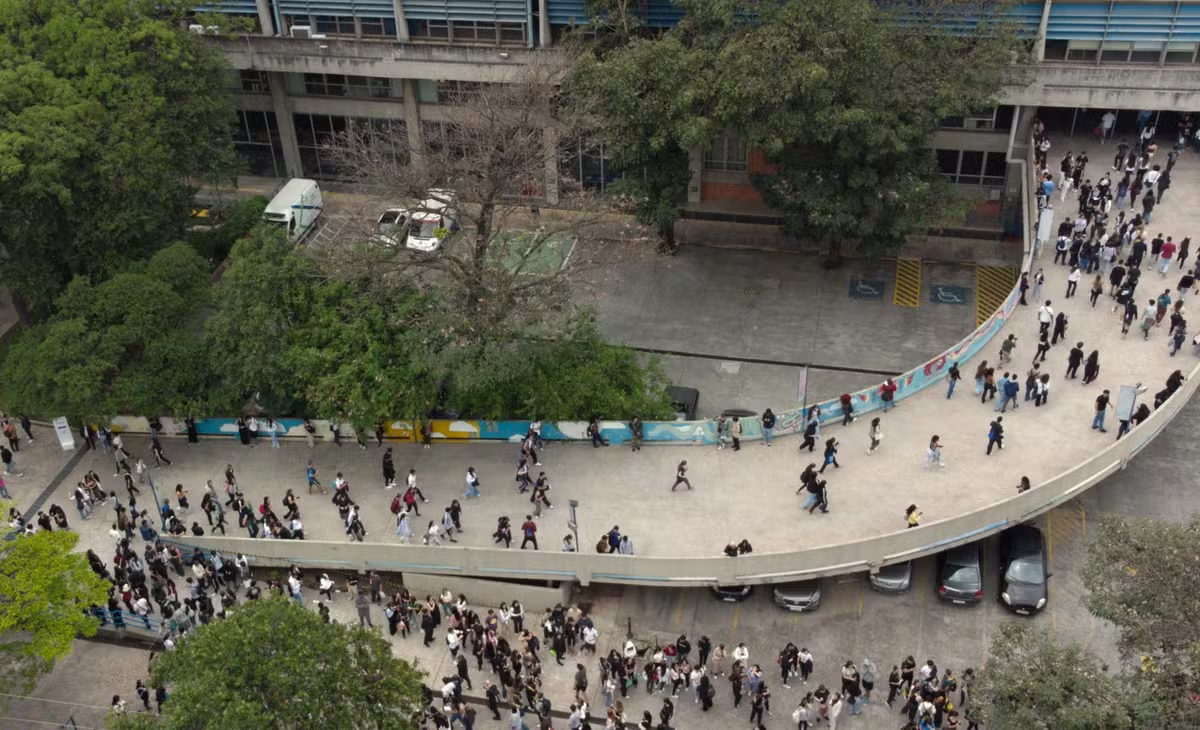
The competition for entry into higher education with Enem began yesterday among the millions of candidates who took the exam. It is a legitimate dream of most young people to get a job at a university in the future that offers better income and employment conditions, but only a few can achieve it. While this is true virtually all over the world, the gap between expectations and reality is even greater in Brazil.
In May this year, the OECD released a report on the career readiness of teenagers around the world. Although the print publication did not include data on Brazil, the organization created an interactive platform that allows students to see how Brazil compares to other countries on several indicators through their responses to the Pisa Questionnaire, a test for 15-year-olds.
When asked what job they would like to have when they turn 30, 62% of young Brazilians said traditional jobs that require full higher education, such as doctors, lawyers, engineers, and architects. In the job market, we find that these professionals make up only 12% of those employed. In other countries participating in Pisa, the proportion of students with university career ambitions is similar to what we see here, at around 60%. The difference is that in developed countries, these vacancies account for 20% to 30% of the job market, resulting in less imbalance.
There are many things we need to do to shorten the distance between our dreams and reality. Part of the solution has to do with our ability to create more highly skilled jobs while ensuring the supply of professionals with the necessary requirements to fill these vacancies matches demand. This in itself is no easy task. But the OECD report also highlights other areas where we need to make further progress. One of them is vocational guidance.
On average in the OECD, 49% of students said they had received vocational guidance from a specialist within their school, but here that proportion has dropped to 32%. When asked the same question about out-of-school instruction, the situation was reversed, with Brazil’s proportion (36%) slightly higher than the OECD average (33%), but with the huge social inequalities that are typical of Brazil. Here, among young people from higher socio-economic levels, the proportion of young people who have received vocational guidance outside of school is 42%, while among the most vulnerable young people the proportion drops to 29%. In the OECD, the variation between the two extreme values is minimal (32% and 33%). In other words, the poorest young people – the very ones who would benefit most from effective vocational guidance – are the ones who have the least support from schools and families.
Of course, not all employment problems can be solved by vocational guidance. In addition to specific developments in the job market, we also need to expand the range of options available to high school graduates. This includes specialist education, further efforts to link schools and employers, and support for transitions between school and work, especially for the most vulnerable. Also, for young people going on to higher education, giving them more time to choose a career would be very helpful. Forcing them to make life-altering choices at age 17 and forcing them into a rigid model that makes it difficult to transition between fields of higher education only increases the risk of failure and early dropout.



